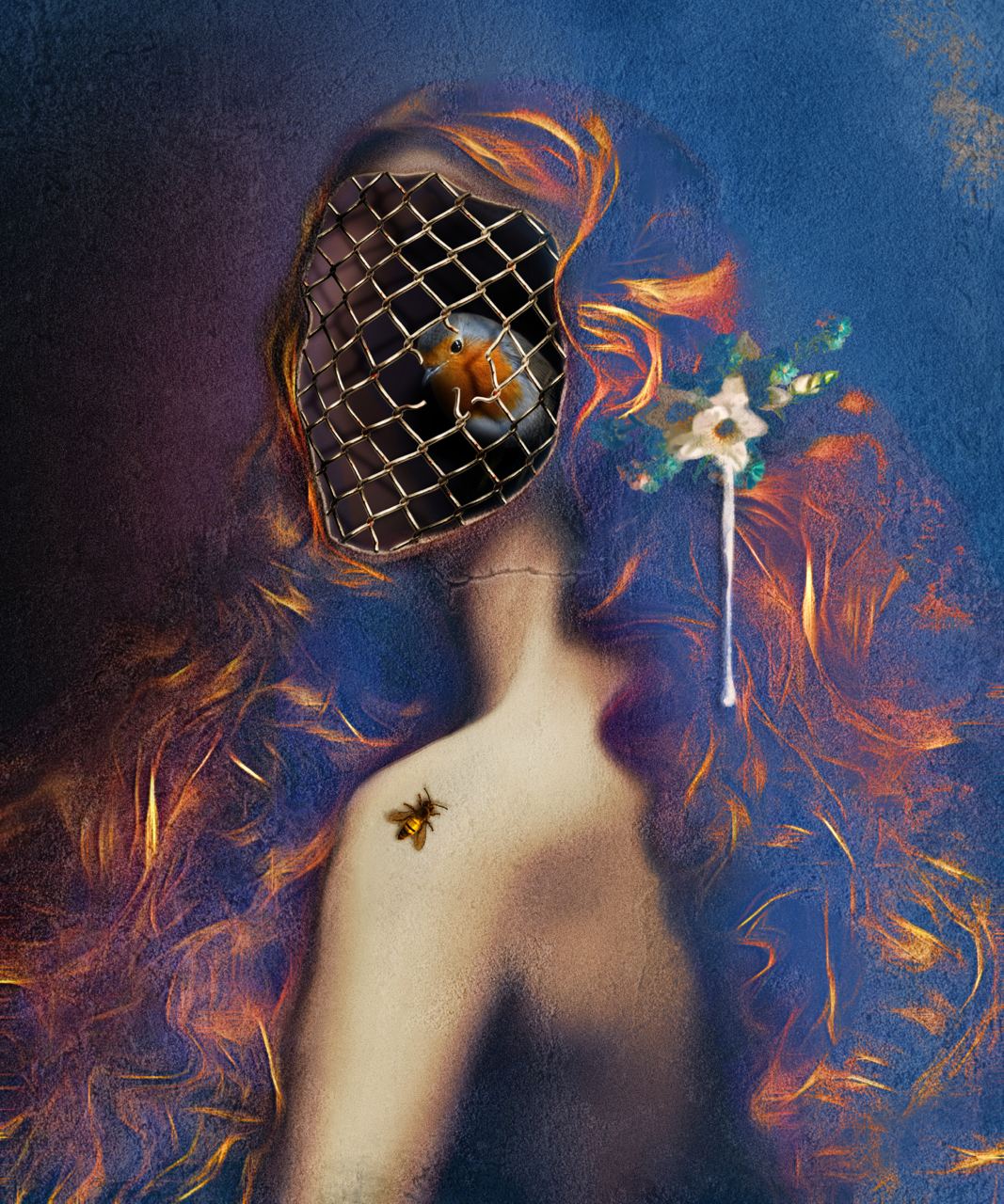“Behind the Wall” by Valérie Biet
Review by Claudio Komarek

I once read the following sentence: "What is drawing? How do we get there? It is the act of opening a passage through an invisible iron wall that seems to lie between what we feel and what we can do."
Apparently, a Dutch painter named Vincent and Van Gogh by last name said it. I don't know how much he knew about philosophy, but he knew enough about drawing and painting. So, what did Van Gogh really mean, though?
Looking at this beautiful work by Valérie Biet, I immediately made the connection to that powerful and enigmatic phrase and not just because of the mention of the Wall in the title...there is an invisible thread that skims and links art in history and it is the immanent suggestion of being able to unite the two worlds, the tangible with the intangible, what it is with what it could be, and what it could be is in the creative gesture of the artist.
The artist makes this happen, they make real what we feel, they give form to the formless, they dig into the collective unconscious and unearth pieces of the world we had not yet seen. Pablo Picasso would have simply said, "I don't seek, I find!"
But there is more in Behind the Wall, there is a narrative that captures our intimate hope of escaping from the cages we ourselves often build, faces as cages, cages as faces, faces as masks, because sooner or later we all become prisoners of the masks we ourselves build, to protect ourselves from those around us, to make ourselves loved by those we admire, to build a semblance of serene solidity that protects us from the unknown that awaits us and from the nonsense of existence.
But there is more in Valérie's work, there is the imperfect beauty, made of what covers us and which is bound to degrade, it hides the beauty of what is most authentic in us, and which we often keep concealed out of fear that others will uncover it, and with it our weaknesses. It is the most precious part of us, and like a beating human heart, it has infinite life force but also a dramatic fragility. We spend our lives in the paradoxical dynamic of building up shields to protect our purest part, and at the same time we struggle daily and laboriously to then take off these armors.
The theme of the prison is immanent, and throughout history mystics have provided us with a multitude of practices and techniques for embarking on a path of "liberation" and escaping to higher levels of spiritual and sensory awareness. But the problem is not only spiritual or personal; it is existential. For we and our cages are one, like the man in front of Kafka's Law to whom the gatekeeper pronounces: "This door was meant for you. Now I am going to close it."